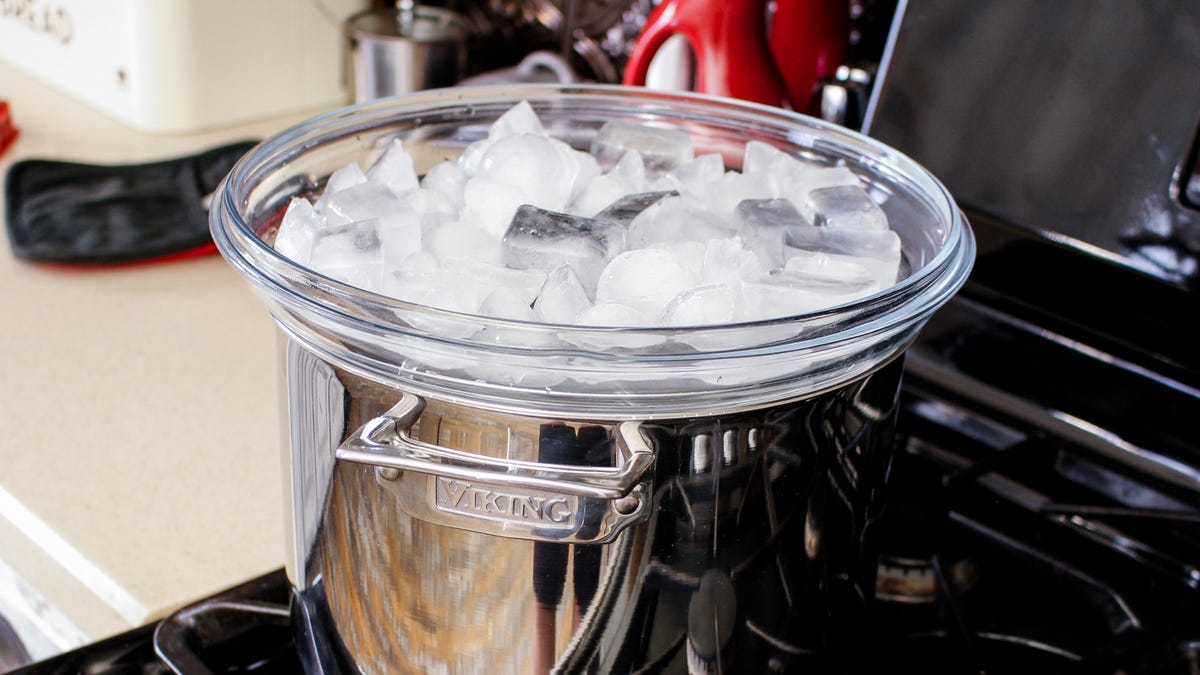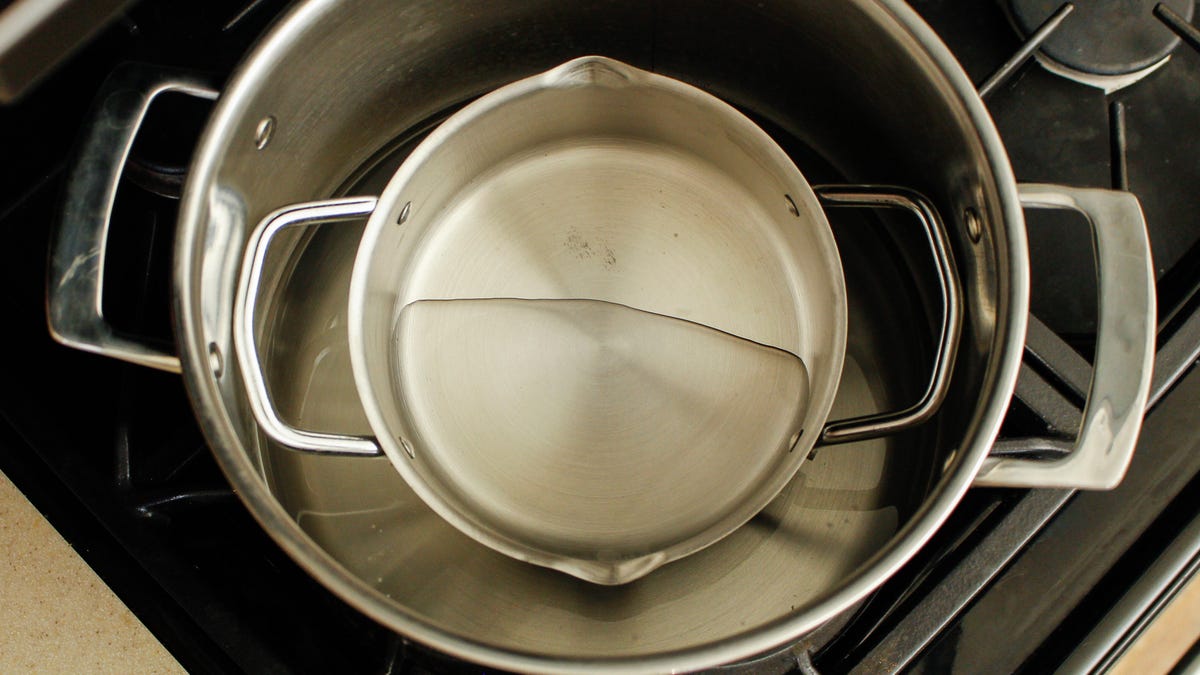A recent CDC report highlighted a newly discovered danger of using tap water for nasal rinsing — the risk of Acanthamoeba infection. The new research is a powerful reminder of why you should use distilled water in devices like neti pots and humidifiers.
You can usually buy distilled water at your local grocery store or on Amazon, but considering how easy it is to make, you should try doing it yourself at home. Not only will you save money by replacing the store-bought stuff with your own homemade distilled water, but it can also help when your store is out of stock — recent years have seen several local shortages and outages. All you’ll need are things you probably already have: two pots, water, a stove and a few minutes of your time.
For people suffering from sleep apnea who use CPAP machines or any other sort of humidifier, distilled water is essential. It’s also useful if you don’t want additional minerals in your water. (For example, distilled water won’t corrode automobile engine parts or create lime-scale buildup in aquariums.) If you live in a place with “hard” water, or water with lots of chemicals, you can even use distilled water to protect your hair when washing it. However, since distilled water doesn’t have minerals like calcium and magnesium, it tastes bland and isn’t the best for drinking.
Below, I’ll walk you through the five steps to make your own distilled water. I’ll also explain the differences between all the types of water you come across in the store. For more tips, here’s how much you can save by switching from bottled water to a Brita filter, whether it’s cheaper to buy groceries online compared with the grocery store and how to save money by making the food in your fridge last longer.
What’s the difference between tap, filtered, purified and distilled water?
It’s easy to be confused by all of the terms around confusing.
Tap water is the easy one. Turn on your kitchen faucet. Water comes out the tap. Voila! Tap water. The quality of tap water varies by location, and might contain traces of minerals specific to the geology of your region, as well as traces of chemicals used in municipal water treatment. Hopefully your tap water is safe to drink, but that’s not true for as many as 45 million Americans. Filtered water is one solution.
Filtered water starts out as plain tap water. You may already have filtered water in your home by way of a whole-house filtration system, a faucet filter or a water filtration pitcher (you can even get a filtered water bottle). Most filtered water passes through some combination of carbon and micron filters, which help to remove chemicals such as chlorine (commonly added to municipal tap water as a disinfectant) and pesticides, and metals like copper or lead. Filters can also eliminate foul odors and tastes.
Purified water usually begins as tap water as well. It will go through many purification processes, including those used for water filtration. Purified water goes a step further than filtering, with a process that removes chemical pollutants, bacteria, fungi and algae. You’ll often find purified water in bottles at your local grocery.
Distilled water is a more specialized type of purified water, but much easier and cheaper to produce at home. As with purified water, it meets the classification requirement of 10ppm (parts per million) of total dissolved solids, aka contaminants, or less. The process of distilling is simple: Heat tap water to the point that it turns to vapor. When the vapor condenses back to water, it leaves behind any mineral residue. The resulting condensed liquid is distilled water.
Is it safe to drink distilled water?
Distilled water is completely safe for use, but the downside of distilling is that it removes all of the helpful minerals like calcium and magnesium that occur naturally in tap water. For that reason, it isn’t generally recommended to use distilled water as your daily drinking water. You might also find that it lacks the flavor of tap or filtered water.
Can I store distilled water?
If stored properly, distilled water can have a long shelf life, as long as it’s not exposed to direct sunlight or warm temperatures.
Choose the storage container you use for distilled water carefully. Distilled water’s lack of nutrients can cause it to leach chemicals from the container it’s stored in. If you plan to use the water immediately, most containers will do fine, but for long-term storage it’s best to use glass or high-quality stainless steel.

Ice speeds up the condensation process.
1. First, place the large pot over a stovetop burner and add 8 cups of water. Then, place the smaller pot inside the large pot. At this point, the smaller pot should float on top of the water. The key to circulating water vapor inside the large pot is airflow. Make sure there’s plenty of space around the smaller pot, both around its sides and between it and the top of the larger pot.
2. Next, turn the burner to somewhere between medium and medium-high heat. I tried to keep the heat level at a steady simmer — somewhere between 180 and 200 degrees Fahrenheit — and not a boil. Running a higher temperature won’t get you a higher yield, but it will warm up the cold side of the lid faster, and make general handling of the equipment harder to deal with.
3. After you put the burner on, place the lid upside-down on the large pot. Lids are usually higher in the middle than around the edges. Flipping the lid will allow the condensed distilled water to trickle down to the middle of the lid and into the smaller pot. Once all this is done, head over to your ice-maker (or tray) and load the top of the inverted lid with ice. The difference in temperature on the two sides of the lid will speed up the condensation process.

The water in the smaller point is your distilled water.
5. Any water that has dripped down into the smaller pot has now been distilled. Again, I was able to make about 1 1/4 cup of distilled water from 8 cups of tap water in about an hour.
Just remember, making your own distilled water is easy (and fun!), but lack of nutrients makes it a bad choice for daily drinking water. But if you’re stuck at home and you rely on a device that requires it, or perhaps you just want to keep your fish healthy, you may want to try making it yourself.
For more, check out how to clean mold and bacteria out of your washing machine and the best way to unclog a clogged sink or a clogged toilet.

